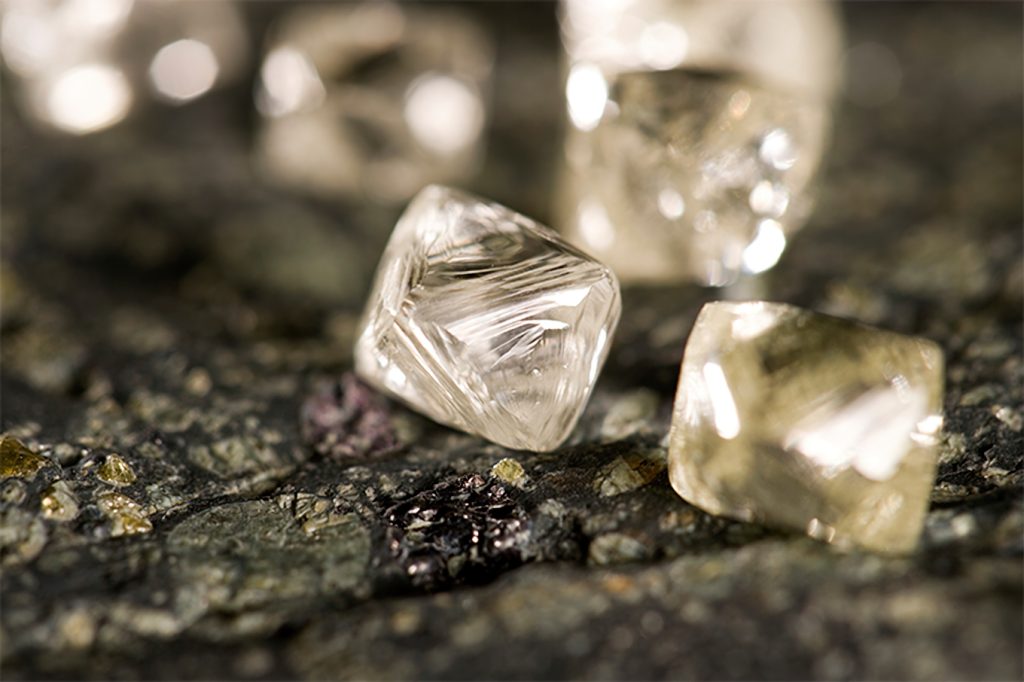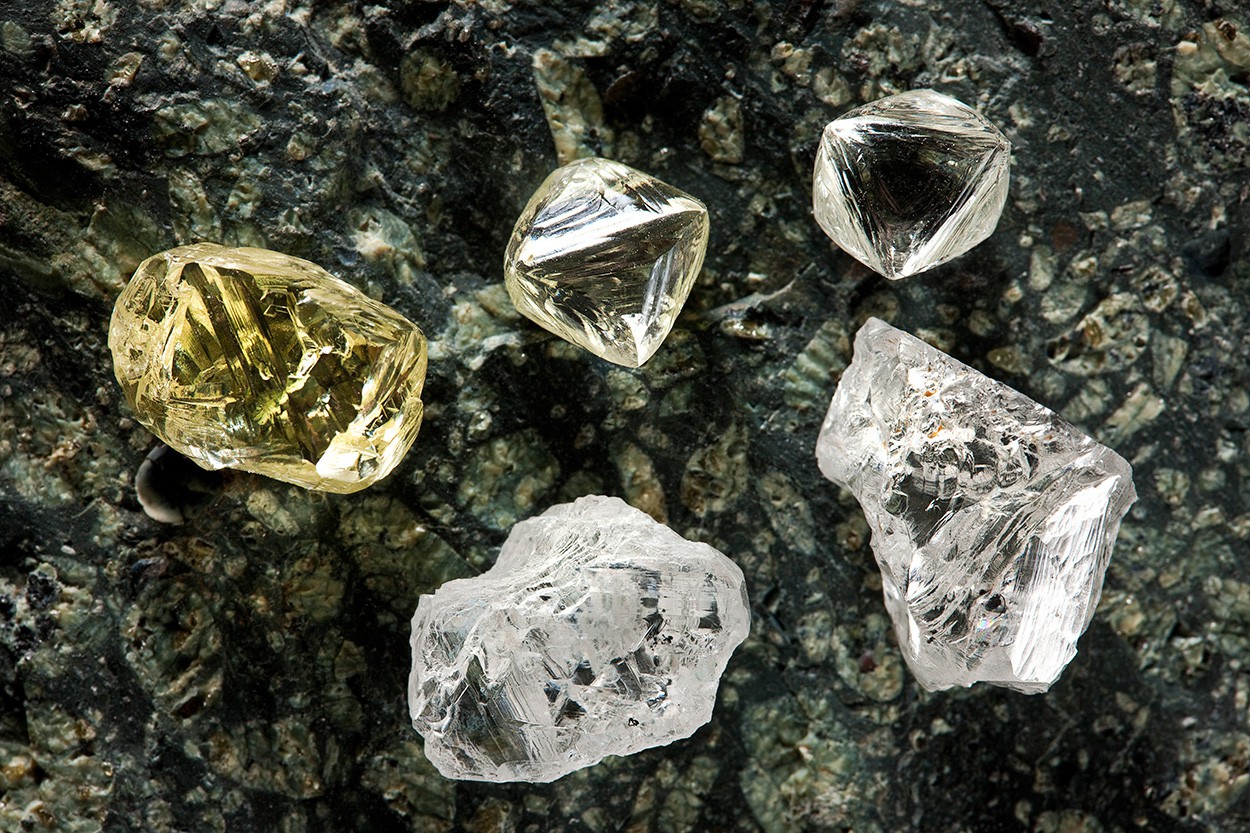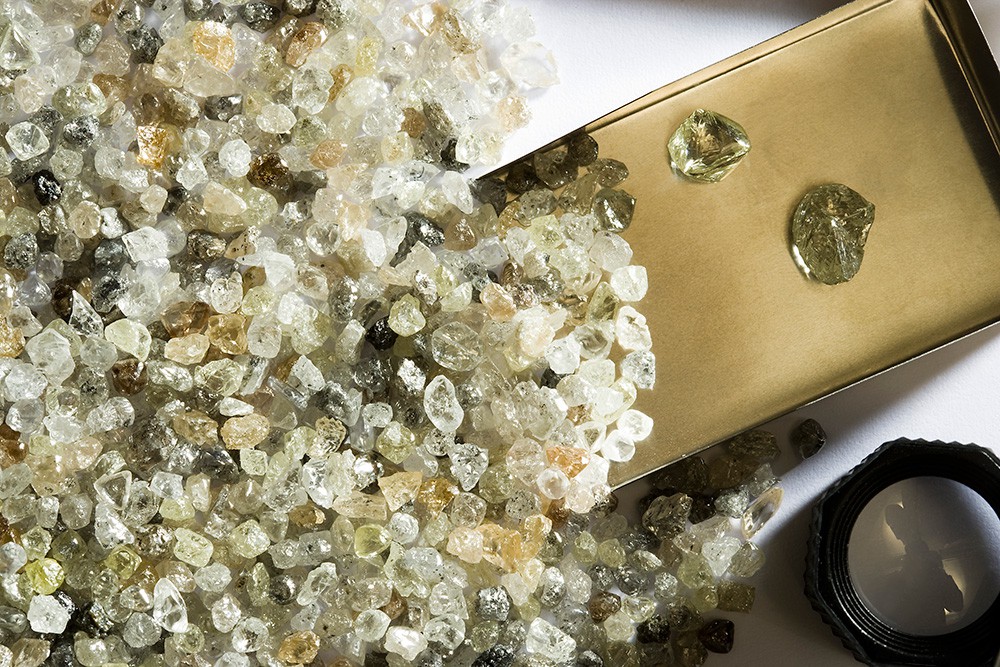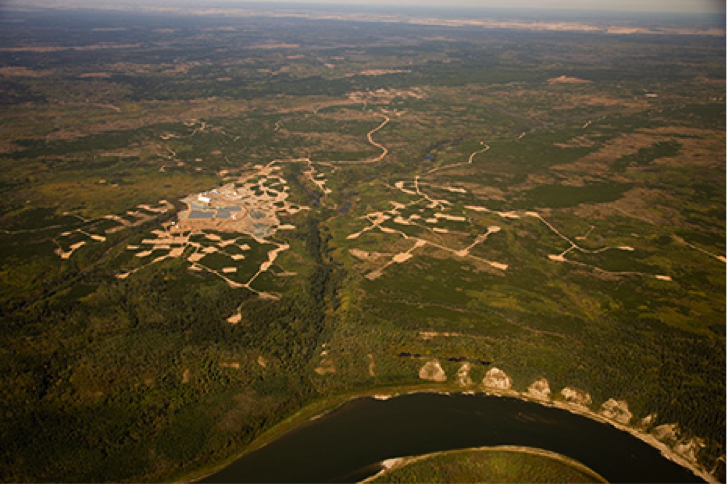Diversifying your portfolio with diamond exploration stocks

By Peter Kennedy
The saying “Diamonds are a girl’s best friend” may be cliche, but it remains true today and the crystals are also a savvy investor’s best friend. According to a recent report by Allied Market Research, the diamond market was valued at $100.4 billion in 2022, and is projected to reach $155.5 billion by 2032, registering a CAGR of 4.5% from 2023 to 2032, is now the right time to consider adding these precious stones to your investment portfolio?

The diamond industry is dominated by a handful of major players, including De Beers, Alrosa, and Rio Tinto. These companies control the supply of rough diamonds, which are then cut and polished by independent diamond cutters and sold to retailers around the world.
The demand for diamonds is driven by several factors, including the growing middle class in emerging markets such as China and India, as well as the popularity of diamond engagement rings in Western cultures. However, the supply of diamonds is limited by the finite number of diamond mines and the difficulty of extracting diamonds from the earth. This creates a delicate balance between supply and demand that has a significant impact on the price of diamonds.
One popular option is to invest in physical diamonds by purchasing loose stones. When investing in physical diamonds, it’s important to consider the four Cs: colour, clarity, cut, and carat weight. These factors determine the value of a diamond and have a significant impact on its resale value. It’s also important to work with reputable dealers who can provide certificates of authenticity and appraisals for your diamonds.
New York based company Diamond Standard has created the only regulator-licensed diamond commodity, unlocking the world’s most valuable natural resource as an investable asset class. Each Coin and Bar contains an equivalent set of investment grade diamonds with the provenance of each diamond commodity audited and authenticated on the blockchain. Enabled by the first electronic diamond exchange and market maker, the Diamond Standard ecosystem provides access to a $1.2 trillion natural resource commodity asset.
One other option is by investing in companies that are involved in diamond exploration and mining. This can provide exposure and liquidity to the diamond market without the need to physically hold the stones.
 One such company is Star Diamond Corp. [DIAM-TSX], a company that is focused on developing one of the world’s largest diamond projects. Its key asset is a 25% stake in the Star-Orion South Diamond Project, which is located in the Fort à la Corne district in central Saskatchewan. The other 75% is currently held by Rio Tinto Exploration Canada (RTEC), a unit of Rio Tinto Plc [RIO-NYSE].
One such company is Star Diamond Corp. [DIAM-TSX], a company that is focused on developing one of the world’s largest diamond projects. Its key asset is a 25% stake in the Star-Orion South Diamond Project, which is located in the Fort à la Corne district in central Saskatchewan. The other 75% is currently held by Rio Tinto Exploration Canada (RTEC), a unit of Rio Tinto Plc [RIO-NYSE].
The Fort a la Corne district is known to contain large volumes of kimberlite, the rocks that sometimes contain diamonds in economic quantities. In recent years, exploration has focused on two diamond-bearing kimberlites on what is known as the Star-Orion South project located on the south-eastern portion of the Fort à la Corne properties.
In 2018, Star Diamond announced positive results of a preliminary economic assessment (PEA) on the Star and Orion South kimberlites. The PEA envisaged production from two open pits with a centralized processing plant, fed by 470 million tonnes of material at a weighted average grade of 14 carats per 100 tonnes. The PEA estimated that 66 million carats of diamonds could be recovered from an open pit mine over a projected project lifespan of 38 years.
The pre-production capital cost was pegged at $1.41 billion with a total capital cost of $1.87 billion and an initial capital cost payback period of 3.4 years.
However, in June 2022, RTEC announced that it was exercising an option to place the project on care and maintenance. Rio Tinto also said that subject to fulfilling its existing obligations, it did not intend to commit additional capital to the Fort à la Corne properties beyond what was needed for care and maintenance purposes. Rio Tinto said it planned to review its alternatives in relation to Fort à la Corne, including a potential exit.
However, despite the obvious setback, which sent the value of Star Diamond shares tumbling from 30 cents to $0.08 in January 2023, the company remains confident in the project’s potential. “I have been with the project for 20 years and I’m still excited about it,’’ said George Read, Star’s Senior Vice-President, Corporate Development.
On August 24, 2023, the shares were trading at $0.09, leaving Star with a market cap of $40 million, based on 476 million shares outstanding.
 In an interview with Resource World, Read said the company is currently in discussions with Rio Tinto with the aim of acquiring RTEC’s interest.
In an interview with Resource World, Read said the company is currently in discussions with Rio Tinto with the aim of acquiring RTEC’s interest.
Those discussions remain at an early stage and there is no certainty that any agreement will be reached between Star Diamond and Rio Tinto regarding any such potential arrangements.
“We are very optimistic that we will get the deal done,’’ said Read. “We are working very hard on it.”
Read’s continued optimism is driven by a number of key factors that are worth noting. They include the project’s location in central Saskatchewan. It lies roughly 60 kilometres east of the city of Prince Albert, in close proximity to established infrastructure, including paved highways and the electrical power grid, which provide significant advantages for future mine development.
Confidence is also based on the vast extent of, and massive kimberlite volumes contained in, the Fort à la Corne Field, which boasts one of the largest indicated resources of any diamond project that is not in development.
The 2018 PEA is based on a revised mineral resource estimate that was highlighted by a significant increase in the estimated mineral resources for the Star-Orion South Diamond Project.
In a press release back in November 2015, the company said indicated resources at the Star kimberlite had jumped 38% from previous estimates to 28.2 million carats, while the grade had increased by 11% from previous estimates to 15 carats per hundred tonnes (cpht).
The updated estimate said indicated resources at Orion South had jumped 134% to 27.1 million carats, while the grade had jumped 1.0% to 14 cpht.
 “The diamond populations of the EJF and Cantuar kimberlite units at Star and the EJF unit at Orion South have significantly coarse diamond size frequency distributions from which we can anticipate the recovery of large, high quality (Type 11a) diamonds in future production,” the company said in a press release.
“The diamond populations of the EJF and Cantuar kimberlite units at Star and the EJF unit at Orion South have significantly coarse diamond size frequency distributions from which we can anticipate the recovery of large, high quality (Type 11a) diamonds in future production,” the company said in a press release.
By the time it put the project on care and maintenance, Rio Tinto had completed a very significant amount of work at the project.
In 2019 for example, RTEC completed a 10-hole bulk sample program on the Star Kimberlite using a trench cutter sampling rig. Other recent programs by Rio Tinto have been performed to investigate kimberlites in the Fort a la Corne diamond district other than the Star and Orion South kimberlites, to assess and prioritize these other kimberlites for future exploration and evaluation work.
During 2018, approximately 5,350 line-kilometres of magnetic field data and LiDar (Light Detection and Ranging or Laser Altimeter Survey) data was collected by RTEC, concurrent with their airborne gravity gradiometry survey data, to produce a complete set of gravity field, magnetic field and topographic data over the surveyed area.
Meanwhile, industry officials say the longer-term outlook for natural diamond prices remains positive, anchored on improving fundamentals around supply and demand as many of the world’s largest mines reach their natural end of life over the next decade.
Star Diamond’s other key asset is the Buffalo Hills diamond project. Located in Alberta, it includes 21 mineral leases covering 4,800 hectares. Buffalo Hills is a 50/50 joint venture involving Star Diamond and Canterra Minerals Corp. [CTM-TSXV; CTMCF-OTCQB], the operator. The project is known to host 38 kimberlites of which 26 are diamond- bearing. Extensive geophysical surveys (ground & airborne) have been completed on all priority targets.
Investing in diamonds is not without risks. Things to consider when investing in precious stones is that the market is subject to fluctuations in supply and demand which can affect prices. Additionally, the market is heavily influenced by fashion trends, which can make certain cuts and styles more or less desirable over time. Holding a share position in diamond stocks can enable you to maneuver these market conditions more easily than holding physical diamonds.
THIS IS NOT A RECOMMENDATION TO BUY OR SELL ANY SECURITY.
